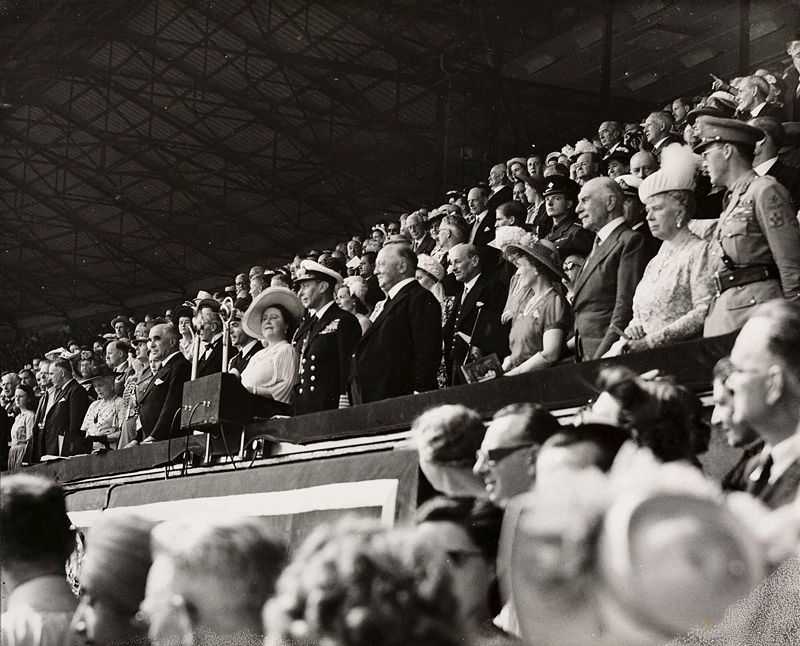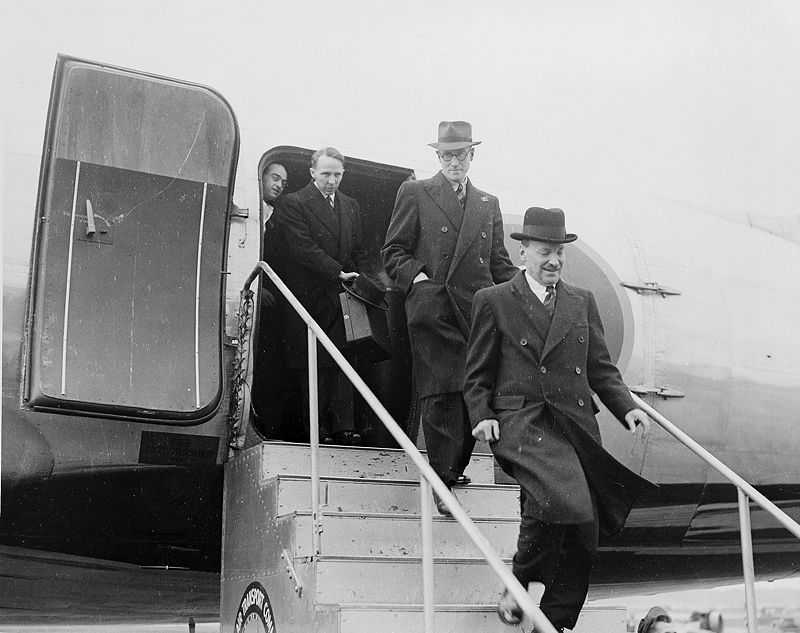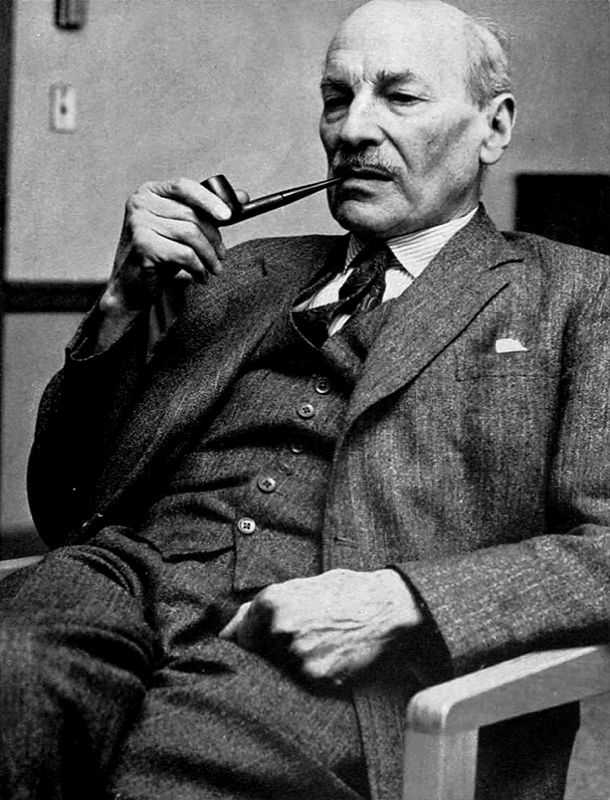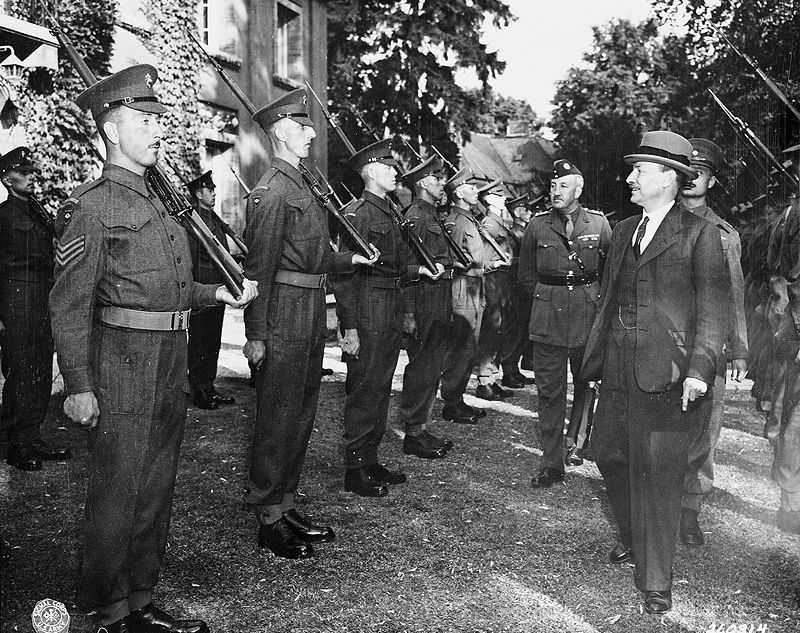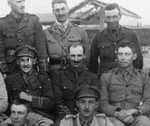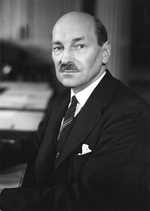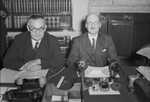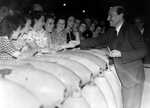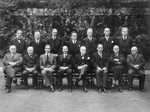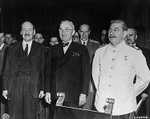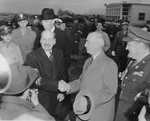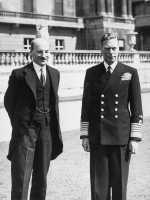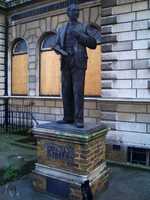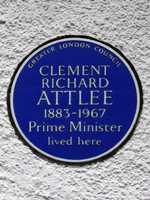1. Attlee's Early Life
Clement Richard Attlee was born 3rd January 1883 in Putney in London, one of eight children for Henry Attlee and Ellen Watson.
His early schooling was at Northaw School before attending Haileybury College, a boarding school in Hertfordshire. From there he went on to University College in Oxford where he studied Modern History and graduated with a degree in 1904. Attlee’s father was a solicitor and following in his footsteps the younger Attlee trained for a career in law and was called to the bar in 1906.
However, Attlee had already begun to volunteer at Haileybury House in the East End of London, a charitable club for working class boys from the area.
It was here he witnessed the conditions many working class people were living in, an experience which gradually influenced his political thinking. He decided to leave law behind him and became a full-time social worker. He joined the Independent Labour party and also the Fabian Society, whose commitment was to establishing a democratic socialist state in Britain.
Like most of his peers Attlee served his country during the first world war. He was commissioned to the South Lancashire Regiment and saw action at Gallipoli before contracting dysentery.
By 1916 he was serving in Mesopotamia where he was badly injured by shrapnel. Attlee was made a Major and following his recovery later served on the Western front in France. After his return from the war he became Mayor for Stepney in East London in 1919, writing a book entitled ‘Social Worker’ which detailed the poverty in the area and laying out policies to tackle it.
2. Early Career
In 1922 Clement Attlee was elected as the MP to represent the constituency of Limehouse and initially worked as Ramsay MacDonald’s parliamentary private secretary.
Two years later and the Labour party under MacDonald’s leadership were in Government for the very first time, with Attlee appointed as Undersecretary of State for War. Attlee was then appointed to the post of Chancellor of the Duchy of Lancaster in 1930 and Postmaster-General the following year.
However the Labour government collapsed in 1931 and Ramsay MacDonald formed a government of National coalition with the Conservatives and Liberals. In the election which followed Labour took a heavy hit at the polls losing all but 52 seats. Clement Attlee represented one of the most loyal Labour constituencies and was one of the 52 returned to Parliament.
Following the election Attlee became the party’s deputy leader and then its leader in 1935 after George Lansbury stepped down following criticism of his strong stand on pacifism.
In light of the increasing Nazi threat on the continent the Labour party removed their prior opposition to rearmament and Attlee opposed the Munich agreement of 1938. On the domestic front Attlee steered his party toward moderate policies.
In 1939 Clement Attlee offered his full support for the declaration of war against Germany but he would not join a wartime coalition government headed by the conservative Prime Minister, Neville Chamberlain. Lacking this support made Chamberlain’s position increasingly difficult and when he resigned Attlee agreed to join Winston Churchill’s coalition government as Lord Privy Seal before becoming deputy Prime Minister.
3. From Wartime Coalition to Prime Minister
As part of Churchill’s cabinet Attlee stayed loyal to his Prime Minister even through tough periods when other cabinet members were leaning toward looking to deal with Hitler.
Indeed, only Attlee and Churchill were the ever-present members of the cabinet of the wartime coalition government. As well as deputy Prime Minister, Attlee also served as Lord President of the Council and would often preside over meetings in Churchill’s absence, displaying an ability to make quick and decisive decisions.
After the war this experience of holding a wartime cabinet meeting together was to hold him in good stead. No doubt much to the astonishment of those looking back on history today, the people of Britain did not reward Winston Churchill with an automatic victory in the election held in 1945.
Instead they returned a labour government headed by Clement Attlee. The desire for social reform had been building and the influential 1942 Beveridge Report set out certain principles to remove poverty and want from British society, including the assumption of full employment which would help fund a welfare state. Labour based its election campaign around the slogan, “Let Us Face the Future”, aware of the hardships for many during the Depression prior to the war.
Although Britain faced severe financial hardships after the war, Attlee’s government proceeded to introduce a raft of legislation which still impacts our lives today. Besides extending the welfare state including a new social security system, Attlee oversaw the creation of the NHS in 1946 working alongside his Minister for Health Nye Bevan.
He nationalised industries including coal, rail, gas and electricity, as well as bringing the Bank of England under public ownership. The economy, education, workers rights and housing were further domestic areas where Attlee successfully introduced sweeping reforms.
Attlee’s government was one of strong characters and strong opinions which he had to carefully manage. One of these was his Foreign Secretary Ernest Bevin who Attlee backed in his cold war diplomacy and policy to make Britain a firm ally of the US.
To this end Attlee was key in the formation of NATO in 1949 to counter the perceived threat from the USSR, having already sent planes to assist the Berlin airlift in 1948. Attlee then agreed to send British troops to the Korean War in 1950. A highly significant part of his foreign policy was his granting of independence for India in 1947 which marked the beginning of the end for the British empire.
4. Later Life and Legacy
After the 1950 election Clement Attlee's labour party was re-elected with a tiny majority. Following resignations Attlee called another election in 1951 to try and restore authority in his government.
The move backfired as the Conservatives came to power with their own small majority and Attlee resigned his office. He stayed on as leader for a further four years, trying to mediate the differing views forming in his party and particularly focussed around Hugh Gaitskell and Nye Bevan. However, after being defeated by Anthony Eden in the 1955 election, Attlee resigned as leader of his party to be replaced by Gaitskell.
In 1951 Attlee had been awarded the Order of Merit and then a Knight of the Garter in 1956. He was created an Earl after he resigned as Labour party leader and headed to the House of Lords where he retained his political interest and activity.
Clement Attlee died in Westminster Hospital on 8th October 1967 of pneumonia at the age of 84. Away from the world of politics he had married Violet Millar in January 1922 who passed away three years prior to Attlee. They had four children.
Clement Attlee is regularly cited as one of Britain’s greatest Prime Minsters, overseeing a government which introduced a series of radical reforms. The NHS remains a treasured institution among the British public and the Welfare State has provided a welcome safety net for many requiring financial or social assistance.
From the early days working in London’s East End Attlee saw the need for change, to provide opportunity for all and social progression. The importance of his support as leader of the opposition to the Conservative leader Winston Churchill as part of a wartime cabinet should not be overlooked either.
In a time of housing shortage Clement Attlee’s government also built 1 million homes after the war during a period in which the country was almost bankrupt.
Around 80% of these homes were council homes and were needed to replace houses destroyed through bombing during the war. His political service is commemorated by a statue in the Houses of Parliament which was erected in 1979. Another statue previously situated outside Limehouse library in his former constituency can now be found on the Queen Mary University of London site in Mile End.
